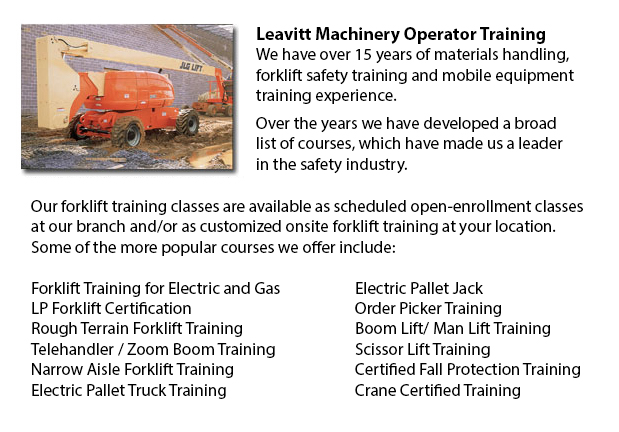
Kitchener Boom Lift Operator Training - A cherry picker is a type of aerial work platform. Cherry pickers have a platform or bucket at the end of a hydraulic lifting system. The machine is also called a boom lift, man lift, hydraladder or basket crane.
The platform or bucket is normally mounted on the back of a huge motor vehicle like for example a truck, which is sometimes referred to as a bucket truck. A stand-alone trailer, self-moving platform or flat back pickup van may also be made use of. The one working stands within the bucket and works from there. The person within the bucket often consists of an upper set of controls allowing control of the position of the bucket. The bucket's reach can be lengthened on some models by telescoping to adjust the lifting arm. Automatic safety controls prevent tipping. Articulated boom lifts are recommended for working within tight spaces or when it is required to clear obstacles.
Cherry pickers, as the name implies, were first constructed for picking fruit at high levels in trees. These devices are often utilized in various businesses like construction, mining and exterior painting. At times they are used for cleaning windows on high rise. The devices are utilized to service telephone, cable television and electrical equipment on utility poles. Fire fighters sometimes make use of cherry pickers, called snorkels, when ladders are inadequate. During Christmas time, civic workers could be seen hanging lights and banners within cherry pickers.
Boom Lift Operator Safety Training
Suggested training standards for safety awareness are set by local regulations. Curriculum consists of safe operation methods through a combination of hands-on and classroom components.
Sessions include the following topics: general equipment safety considerations; current regulations and applicable concerns; features of boom lifts; fall protection, other stationary work platform and scissor lifts.
Also included are the different lift operator's responsibilities, like for example: function test procedure; workplace checks; avoiding and knowing hazards; pre-operation check procedures; and equipment manufacturer's directions.
-
Kitchener Forklift Training Schools
Kitchener Forklift Training Schools - The Advantages Of Taking One Of Our Forklift Training Schools Are you searching for work as a driver of a forklift? Our regulatory-compliant mobile equipment operator training offers instruction in types of fo... More -
Kitchener Overhead Crane Operator Training
Kitchener Overhead Crane Operator Training - Our overhead crane operator training course is designed to teach employees the basics of overhead crane/sling operation and pre-shift checks. Courses are taught by our expert trainers and consultants. Well... More -
Kitchener Crane Training School
Kitchener Crane Training School - The crane training school offers industry-relevant programs. Courses provide trainees with learning outcomes which match present industry demands. Our small class sizes combine hands-on experience and theory. Our qua... More -
Kitchener Skid Steer Ticket
Kitchener Skid Steer Ticket - The lift arms on the skid-steer loader are located at the side of the driver along with pivots behind the driver's shoulders. These features makes the skid-steer loader different as opposed to the conventional front load... More -
Kitchener Manlift Operator Certification
Kitchener Manlift Operator Certification - Our scissor platform and aerial lift training and certification empowers participants with a knowledge and general understanding of the efficient and safe use of "Power Operated Mobile Work Platforms," under... More -
Kitchener Crane Safety Training
Kitchener Crane Safety Training - Companies and crane operators have to be aware of the problems related to crane safety. Legislation provides rules for the safe operation, inspection and maintenance of lifting machines all around North America. Cran... More -
Kitchener Forklift Training Programs
Kitchener Forklift Training Programs - Are you searching for work as a forklift driver? Our regulatory-compliant mobile equipment operator training offers instruction in kinds of forklifts, pre-shift check, fuel kinds and dealing with fuels, and safe... More -
Telehandler Training in Kitchener
Telescopic handlers often known as telehandlers for short, are an extremely popular piece of heavy construction machinery. They are commonly used in the construction and agricultural industries. These equipments have extreme reaching ability and can... More

Forklift Certification Kitchener
TOLL FREE: 1-888-254-6157
Kitchener, Ontario
forkliftcertificationkitchener.com
Email Us
About Us


